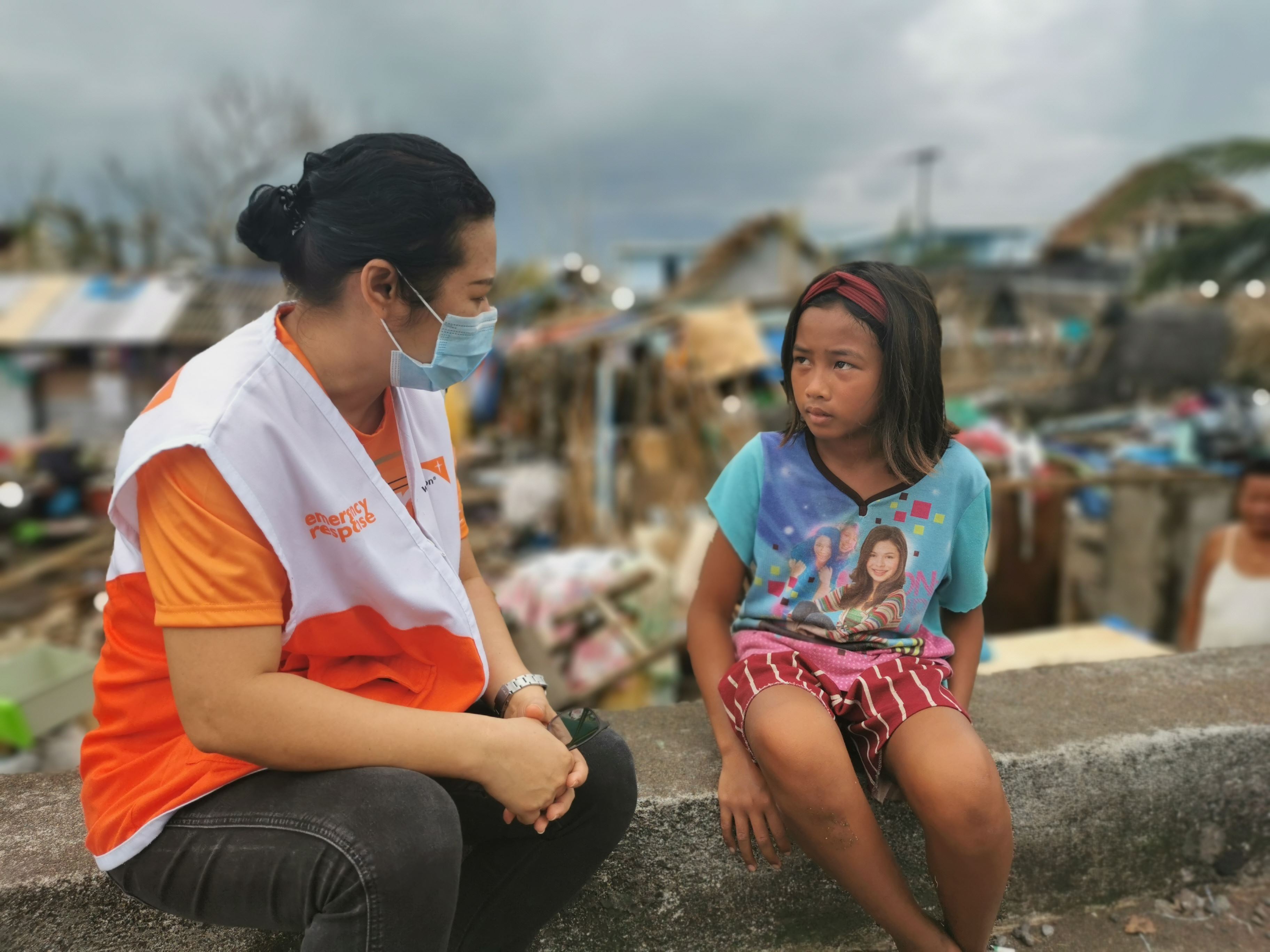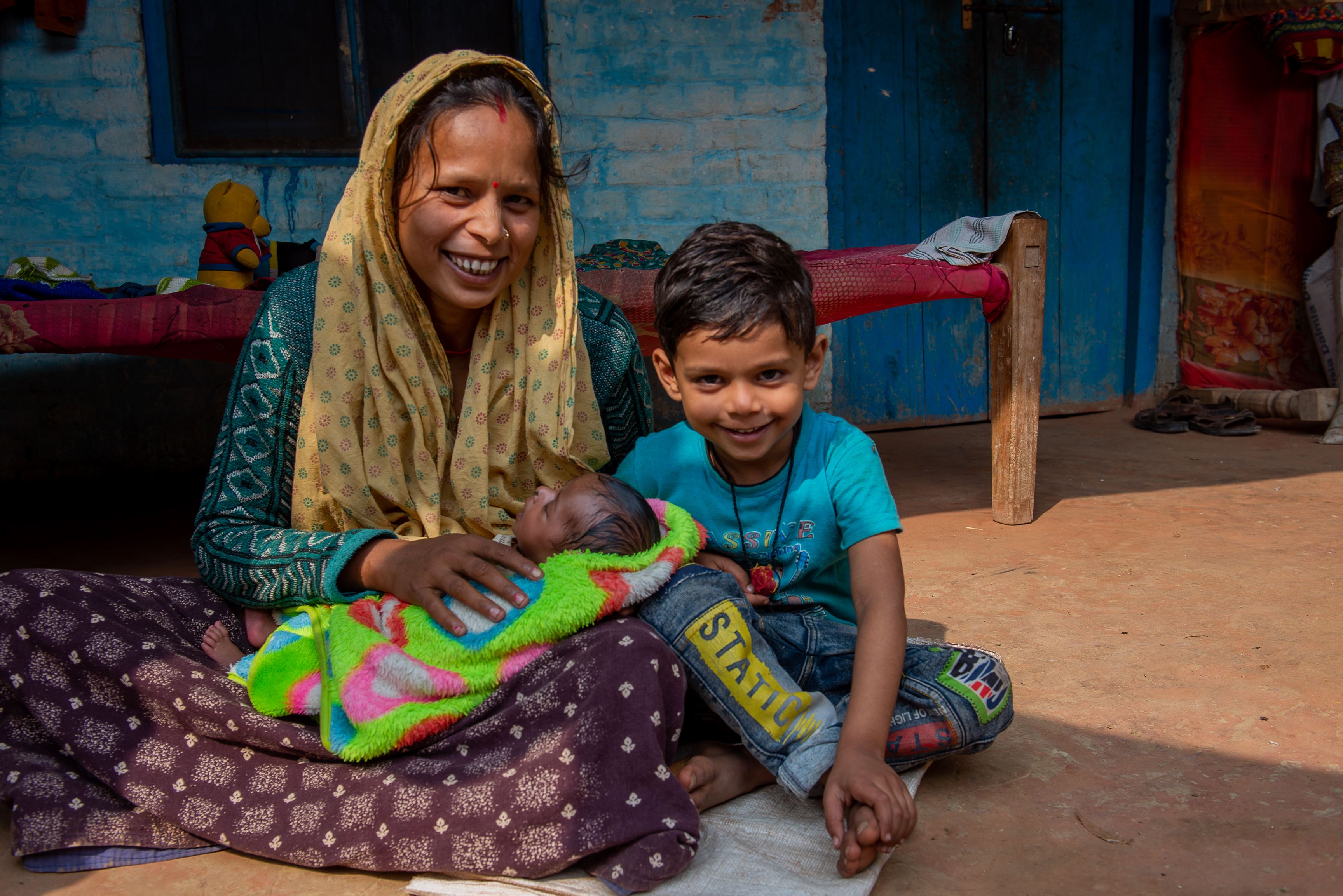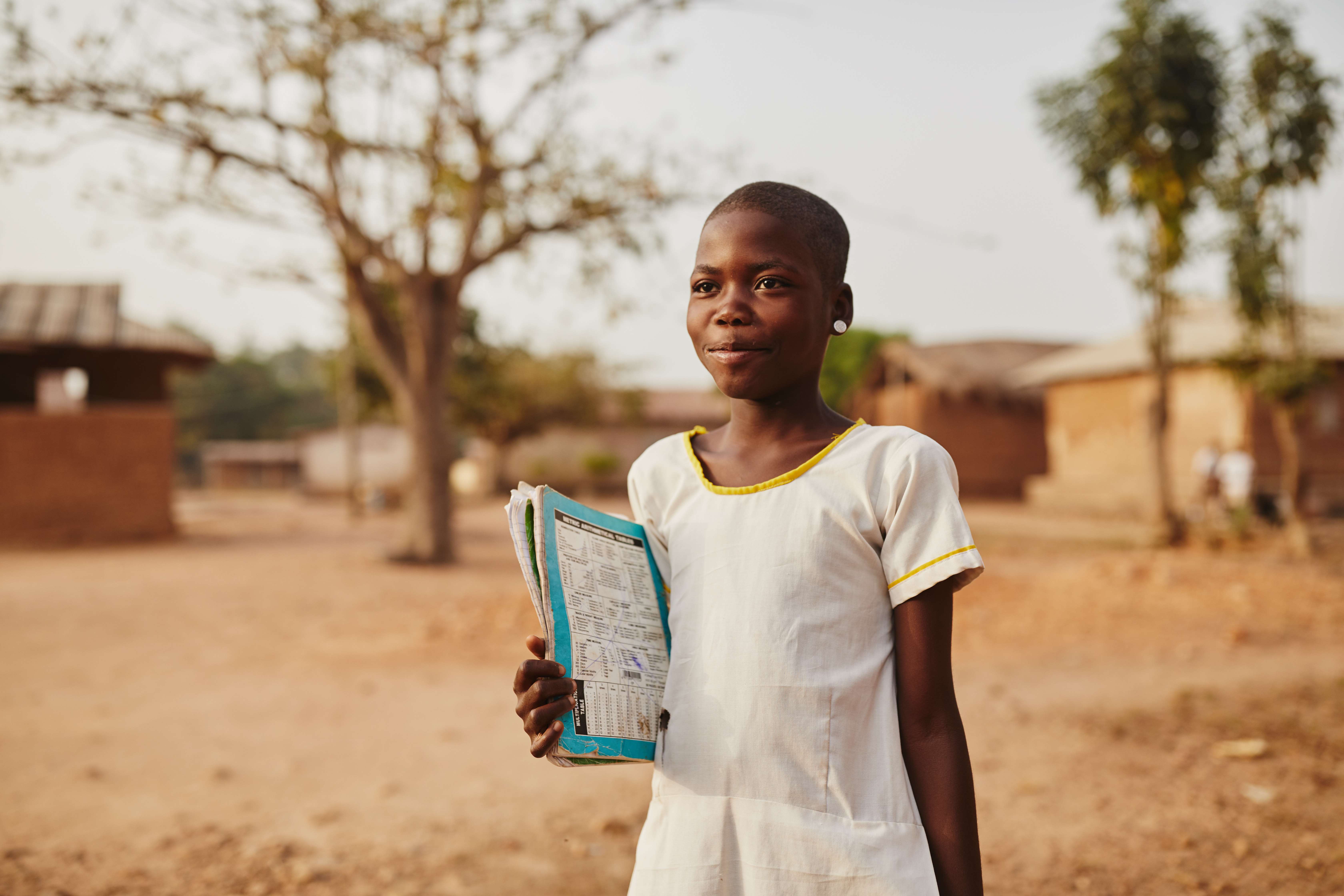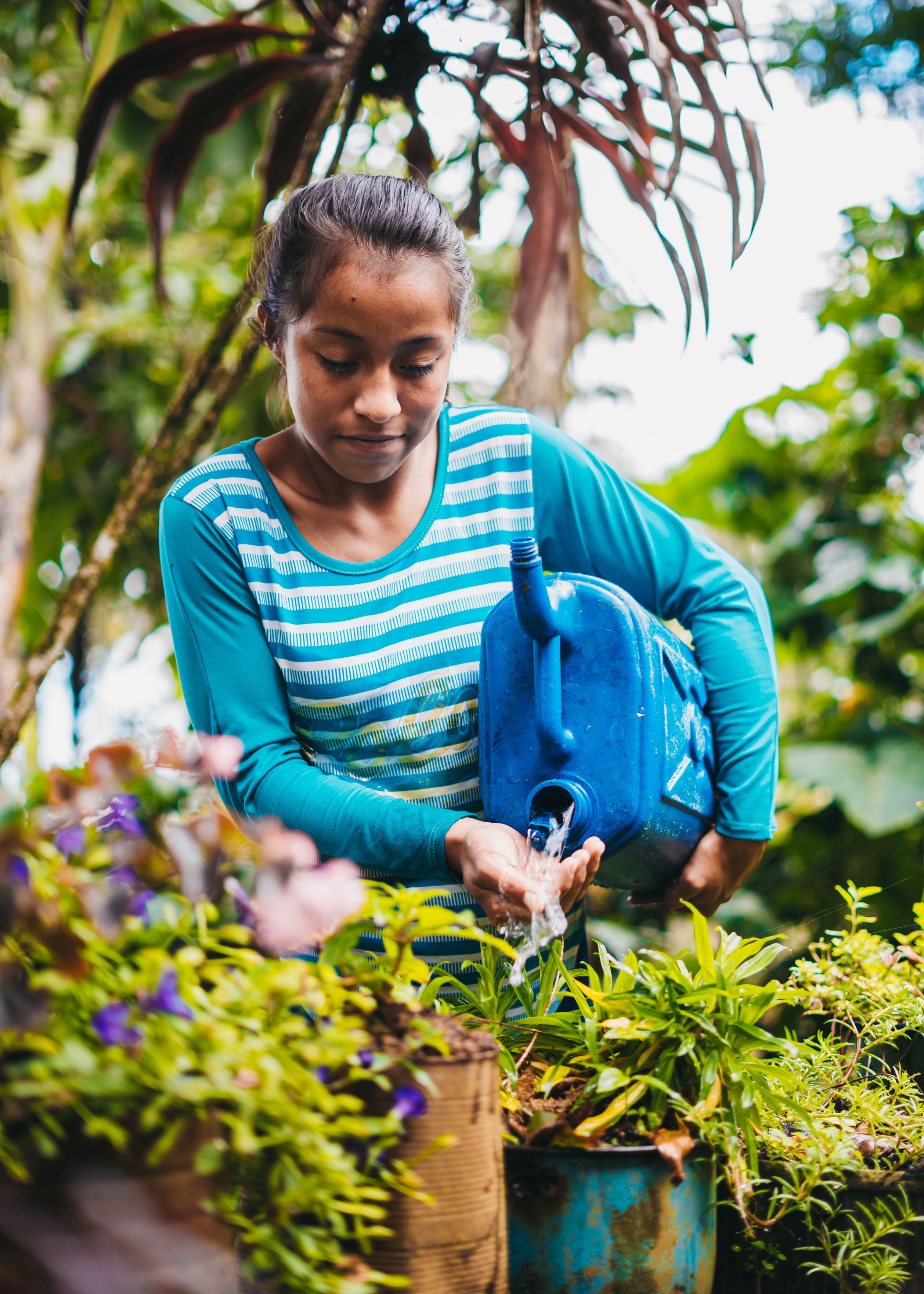
10 Facts about climate change and poverty
Natural disasters exasperate already existing global inequalities.
Climate change is a minefield of controversy. But amid all the debate about what should be done about it, when, and at what cost, one thing is clear: each one of us, in every corner of the world, is affected. But, not equally.
According to the World Bank, climate change threatens to push an additional 130 million people into poverty over the next 10 years. So how are climate change and poverty linked? And what can you do about it?
Here are 10 facts to consider.
1. Climate change doesn't play fair
The negative impacts of climate change are felt more severely by low income countries and people living in poverty. That’s because they tend to depend on natural resources for their day-to-day survival, and they have limited capacity to cope with the extremes climate change brings. Globally, 75% of people living in poverty in rural areas count on natural resources such as forests, lakes and oceans for their livelihoods – so they are on the frontlines of more frequent bushfires, droughts, cyclones and other disasters driven by climate change.
The World Bank reports that the world’s 74 lowest income countries account for just one tenth of global greenhouse gases, but will be hit hardest by the impacts of climate change. Already, they have been hit by nearly eight times as many natural disasters in the last decade, compared to the 1980s.

What World Vision sponsors are doing about it: In the words of Nelson Mandela, “Overcoming poverty is not a gesture of charity. It is an act of justice.”
Addressing the inequality that has created and accepted this global state of affairs is at the heart of child sponsorship. One child, one community at a time, World Vision sponsors are investing in the lives of 2.5 sponsored children and their communities, partnering with them to tackle their biggest challenges – including climate change, as well as the inequality that fuels so many of the problems that children living in poverty face.
At local, national, regional and international levels, we work to mobilise, amplify and harness voices – especially those of children – and change unjust policies, practices, and structures affecting the world’s most vulnerable children.
2. Climate change fuels hunger
According to the World Food Program (WFP), 80% of the world’s hungry people live in areas prone to natural disasters and extreme weather. Increasingly frequent and severe droughts and floods impact crop production globally, reducing the availability of food and driving up prices – and again, low income countries are hit hardest.
Agriculture accounts for up to a quarter of Gross Domestic Product (GDP) in some low income countries and more than 65% of adults living in poverty earn a living through agriculture. When crop yields decrease, families go hungry and, according to the WFP, competition for food and resources also increases community conflict, which further exacerbates hunger.

What World Vision sponsors are doing about it: As well as training families in climate-resilient farming techniques and supporting them to build their livelihoods, World Vision staff and volunteers advocate for national, regional and global policy changes that contribute to improved food and nutrition security for the world’s most vulnerable children, families and communities.
In 2021, 7.9 million people in 29 countries received food support through World Vision and over the last 10 years, 89% of the severely malnourished children we treated made a full recovery.
3. Climate change makes water problems worse
Access to water is already a major challenge for people living in poverty. Climate change has made water access even more difficult by causing more frequent droughts, increased evaporation, and changes in rainfall patterns and run-off that especially impact water availability in areas like the sub-tropics, which already experience water scarcity. The Intergovernmental Panel on Climate Change (IPCC) projected water scarcity will increase from about 1.7 billion people to around 5 billion people by 2025. While scarcity impacts a huge number of the world’s poor, on the other side of the extreme, increasing rainfall and flooding events are also set to increase, with equally as damaging effect. For communities with poor infrastructure, the impact of flooding and rising sea levels can be catastrophic.

What World Vision sponsors are doing about it: World Vision has committed to ensuring clean water, sanitation and hygiene for everyone, everywhere we work, by 2030. Thanks to the partnership of child sponsors and donors, every 10 seconds, we reach another person with clean water.
In 2021, three million people in communities where we work got access to clean water. And according to a study by the University of North Carolina for example, eight in 10 of the wells we drilled in Ghana are still providing clean water after nearly two decades – that’s 33% higher than the industry average.
4. Climate change makes being healthy harder
According to the World Health Organisation (WHO), climate change has a direct impact on increasing illness and disease, including malnutrition from food shortages, deaths and injuries from extreme weather events, diarrhoea linked to excess or scarcity of water, and changes in temperature and rainfall may change the geographic range of vector-borne diseases such as malaria and dengue fever, exposing new populations to these deadly diseases. In countries with limited access to adequate health care, increased sickness, disease and injury related to climate change is expected to have dire health impacts.

What World Vision sponsors are doing about it: Sponsoring a child helps families and communities to protect and improve their health. Mothers and babies are cared for to give children a healthier start to life.
Children receive health care like vaccinations, mosquito nets and health checks to protect against preventable diseases, and parents learn about nutrition and get the support they need to feed their children healthy food, among other child sponsorship activities designed to improve children’s health.
In 2021, we supported more than 400,000 community health workers to get the training and resources they need to look after their communities for years to come.
5. Climate change makes it tough to earn a living
Especially in communities that depend on farming and agriculture for their income, climate change has catastrophic effects. Prolonged drought or other extreme weather events like flooding have the potential wipe out crops and livestock, leaving families unable to provide for their children and searching for alternative options.
According to the International Labour Organisation (ILO), climate change is a contributing factor for the 152 million children under the age of 18 working around the world. Climate change is also one of the drivers of child marriage as desperate parents look for ways to reduce the number of mouths to feed in their household – 110 million more girls are predicted to become child brides by 2030.
In Kenya, for example, prolonged drought means many communities have lost their main source of income. According to World Vision Kenya Disaster Management Director, Gershon Mwakazi, (pictured below, left) the impact of drought on communities is heartbreaking.
"It is heart-wrecking to witness the suffering climate change has subjected families to,” he says.

What World Vision sponsors are doing about it: Child sponsorship helps families build more resilient livelihoods – through our programmes, people learn to save money, get access to micro loans, develop new work skills and learn how to manage money and a business.
Every 60 seconds, a family receives the tools to overcome poverty, and in 2021, nearly 1.5 million people in our sponsorship communities were part of local savings groups, helping to build their financial self-sufficiency.
6. Climate change displaces people
When water dries up, communities are flooded, or food supplies or income earning options run out, desperate families are left with no other choice than to leave their homes. Climate change is causing displacement and forced migration at alarming levels. According to the WFP, extreme weather events displaced 30 million people in 2020. That is three times more than the number displaced by violence and conflict. With climate-related events only predicted to increase, the Internal Displacement Monitoring Centre (IDMC) says the numbers of internally displaced people and refugees will also continue to rise. Without homes or security, children are especially vulnerable to abuse, neglect and violence.

What World Vision sponsors are doing about it: In 2021, World Vision helped more than 30 million people affected by emergencies. Because we partner with communities in the world’s most vulnerable places for up to 15 years to tackle the root causes of poverty, we are already on the ground and ready to help when disasters hit to provide emergency relief, help communities to recover and rebuild, and work with them to strengthen their resilience to future disasters.
7. Climate change can make it harder for children to get to school
When families lose their incomes, their food or water sources, or are displaced from their homes, a children’s educations is often the last or lower priority. Without a reliable income, parents can’t always afford to send their children to school and often keep them home to help to grow food, look after livestock or earn money.
When water is scarce, children – who are usually responsible for collecting it – need to walk further to find it, often resulting in missed school, or less time for homework or play. But, this loss of education will perpetuate the cycle of poverty for those children.

What World Vision sponsors are doing about it: Sponsoring a child not only helps families to mitigate the effects climate change has on their family so that their children can continue to go to school, it also gives children the support they need to learn.
In 2021, we reached 4.1 million children with education programmes, and in Bangladesh, schools using our literacy programme saw children’s reading comprehension improve by 74%.
8. Climate change is expensive to adapt to and recover from
Not only are low income communities often hit hardest by climate change, but without strong economies, it is harder to prevent and recover from climate emergencies.
Hurricanes, floods and fires are all climate related events that can cause widespread damage and wipe away years of hard fought development gains, like community infrastructure or a family’s home, crops and livestock.
For families, communities and countries with limited resources, recovery can be painstakingly slow, which places families and children at increased risk of hunger and other hardship, and can further entrench poverty.

What World Vision sponsors are doing about it: Child sponsorship supports families and their communities to tackle the biggest issues they face and strengthen their resilience to cope with whatever challenges the future holds.
When individual households have the knowledge and resources they need to build a secure future, and people are working together to create a strong community, everyone is better equipped to prepare for and respond to disasters.
9. Climate change intensifies inequality
Climate change not only hits people living in poverty the hardest, it can further extend the gap between rich and poor.
Families who don’t have savings and are already fighting to make ends meet are disproportionally disadvantaged when drought, floods or storms kill their crops or their livestock.
They may be forced to sell what they have at whatever price they can get, while those with financial security are positioned to profit in a crisis.

What World Vision sponsors are doing about it: Focusing on long term, community driven solutions empower children and communities to break the cycle of poverty, –improving food security, strengthening disaster resilience, promoting savings, supporting education, and more. That ensures families are more resilient to face whatever challenges come their way – including climate change.
10. Climate change takes a team effort to tackle
Climate change is one of the biggest challenges the world faces today. It can’t be solved by any one person, or community or country. But together, every person, every community, every country can be part of the solution – and all of us will benefit from the change we make.

What World Vision sponsors are doing about it: Right now, child sponsors, donors, World Vision staff and volunteers, and communities around the world are partnering to make amazing things happen. In 2021, 1.1 million people were trained in disaster risk management, keeping their families and neighbours safer. 3.3 million people put climate smart agriculture practices into action, securing food for their families, communities and nations. 2.3 million people learned best practice techniques for managing natural resources in their area – and in Niger, that has resulted in five million hectares of land being reforested over the last 20 years.
Together we can – and are – creating a better, fairer future.
Not a sponsor yet?
Why start your sponsorship journey and become part of the change today?
Sponsor a child


